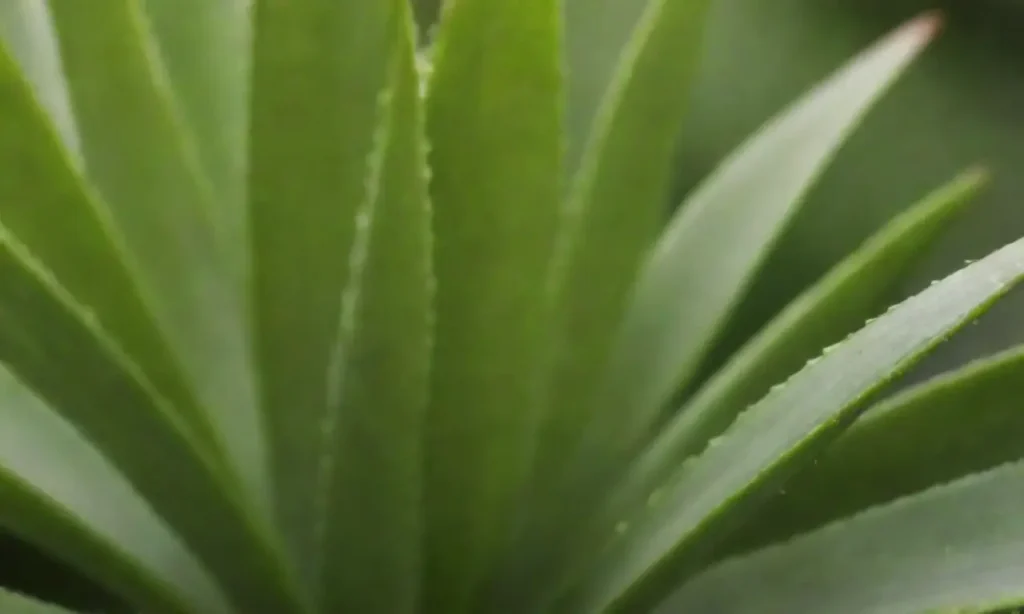
How to Make a Soothing Aloe Vera Gel for Skin Irritation

Introduction
Aloe Vera has earned a reputation as a miracle plant in the realm of skincare. Known for its soothing and healing properties, it is widely used to address various skin irritations, from sunburns to minor cuts and rashes. This incredible succulent has been utilized for centuries, and its natural gel not only offers relief but also nourishes the skin's overall health. This article aims to enlighten you about the numerous benefits of Aloe Vera gel and provide a detailed guide on how to make it at home effectively.
In this comprehensive guide, we will delve into the advantages of using Aloe Vera on the skin, explore various methods of extracting the gel, and discuss how to store it properly. Additionally, we will share tips on how to incorporate Aloe Vera gel into your skincare routine to maximize its benefits. Whether you are battling skin irritation or just seeking to enhance your skincare regimen, this article will provide valuable insights and practical steps to achieve soothing relief through homemade Aloe Vera gel.
The Benefits of Aloe Vera for Skin Irritation
Aloe Vera gel is not just a trendy beauty product; it boasts numerous benefits that make it an essential component for treating skin irritations. Firstly, its anti-inflammatory properties help to reduce redness and swelling, making it an ideal remedy for conditions like eczema, psoriasis, and acne. When applied to irritated skin, Aloe Vera penetrates deeply and brings about a healing effect, often alleviating feelings of itching and discomfort.
Moreover, Aloe Vera gel is renowned for its moisturizing capabilities. It aids in keeping the skin hydrated without leaving a greasy residue, allowing even oily skin types to enjoy its softness without causing breakouts. When the skin is irritated, it can often become parched due to either the irritation itself or the use of topical treatments. The gel acts as a natural hydrator, restoring moisture levels that help soothe the irritated area.
Lastly, Aloe Vera possesses antimicrobial properties that can help in preventing infections. This is particularly beneficial for open wounds or cuts where bacteria may invade and exacerbate irritation. By applying Aloe Vera gel, you are not only easing your skin's discomfort but also actively working to safeguard it against potential harm from pathogens.
How to Extract Aloe Vera Gel from the Plant
Choosing the Right Aloe Vera Plant
Before you can begin creating your soothing gel, you'll need to start with the right Aloe Vera plant. Look for a plant that has thick, fleshy leaves, as these are the most nutritious and contain high levels of gel. If you don’t have a plant at home, you can often find Aloe Vera at local nurseries or garden centers. Opt for a mature plant, preferably one that is at least 3 years old, as it contains more gel in the leaves and has had more time to develop beneficial compounds.
When harvesting the leaves, ensure that you cut one of the outermost leaves, as this is usually where the gel is concentrated. You can cut close to the base of the leaf using a sharp knife. It is advisable to harvest in the morning when the plant has had the chance to take up moisture overnight, which will ensure maximum gel content.
 Transform Your Skin with These Succulent Infused Remedies
Transform Your Skin with These Succulent Infused RemediesPreparing the Aloe Vera Leaves
Once you have securely harvested your Aloe Vera leaves, the next step is preparation. Begin by washing the leaves under running water to remove any dirt and contaminants. After cleaning, place the leaves on a cutting board. With a sharp knife, carefully trim off the spiny edges on either side of the leaf, as these can be tough and unpleasant to consume.
Once the edges are trimmed, cut the leaf in half lengthwise. You will notice a thick, clear gel inside the leaf. Using a spoon or a spatula, gently scoop out the gel while being careful not to include any of the yellow latex exudate, which is found just beneath the surface and can cause skin irritation. It's essential to collect pure gel, as any latex can diminish the beneficial effects of Aloe Vera and may lead to further irritation instead of relief.
Blending the Gel to Perfection
After scooping out the gel, the next step is to blend it to achieve a smooth and consistent texture. Place the extracted gel in a blender and pulse it until it reaches a creamy, smooth consistency. This process not only makes the gel easier to apply but also breaks down any lumps that might be present, allowing for a more seamless application on the skin.
If you prefer to keep your Aloe Vera gel more natural, you can skip blending it and simply store it in its raw form in an airtight container. However, blending enhances its absorption into the skin. For added benefits, consider mixing in a few drops of essential oils like lavender or tea tree oil, known for their calming and antimicrobial properties, respectively.
Storing Aloe Vera Gel for Future Use

Choosing the Right Storage Option
To maintain the integrity of your homemade Aloe Vera gel, proper storage is essential. Ideally, it should be kept in a clean, dry, and glass container to prevent contamination. Plastic containers can react with the natural compounds in Aloe Vera, potentially diminishing its effectiveness. If you plan on making a large batch, consider using small glass jars so you can take only what you need at a time.
Refrigeration for Longevity
Refrigeration is a key factor in prolonging the shelf life of your Aloe Vera gel. Freshly made Aloe Vera gel can last anywhere from one week to several weeks in the refrigerator, depending on cleanliness during extraction and storage methods. The cooler temperature helps to keep the gel fresh and maintains its soothing properties. It can be particularly refreshing to apply cold Aloe Vera gel directly onto irritated skin, providing added relief.
 Family Healing: Using Succulent-Based Remedies for All Ages
Family Healing: Using Succulent-Based Remedies for All AgesPreserving the Gel
For those looking to store Aloe Vera gel for the long term, you may consider adding a natural preservative, such as vitamin E oil. This addition not only helps to extend the shelf life but also provides additional antioxidant benefits for the skin. Just a few drops can significantly enhance the durability of your gel without compromising its natural qualities. Always make sure to check for any signs of spoilage before applying the gel, such as a change in color or an odd smell.
Tips for Using Aloe Vera Gel on Irritated Skin
Application Techniques
Applying Aloe Vera gel onto your skin is a straightforward process. It can be done with clean fingertips or a cotton ball. For best results, ensure that the affected area is clean before application. Gently spread a thin layer of the gel over the irritated skin, allowing it to absorb naturally. Do not rub it harshly; instead, use a light tapping motion to help the gel penetrate.
For added soothing effects, especially after sun exposure, consider refrigerating your gel or keeping it in the freezer for a short period before applying. The cold gel will not only provide relief but also reduce the sensation of heat and inflammation in the skin.
Frequency of Application
To maximize the benefits of Aloe Vera gel, it is advisable to reapply it throughout the day, especially on areas with persistent irritation. You can apply it up to three to four times daily, as needed. Pay attention to your skin’s response; if irritation persists or worsens, it’s essential to consult a medical professional for further advice.
Combining with Other Natural Remedies
Aloe Vera gel can also be effectively combined with other natural remedies to enhance its healing properties. Combining it with ingredients such as coconut oil can provide additional moisture and nourishment, making it ideal for very dry skin. Similarly, blending Aloe Vera with honey, which has natural antibacterial properties, can create an excellent face mask that has healing effects while also promoting hydration. Testing these mixtures on a small patch of skin before broader application is a prudent approach to avoid adverse reactions.
Conclusion
Creating your own soothing Aloe Vera gel at home is a rewarding endeavor that allows you to harness the skin-healing properties of this incredible plant. From understanding its numerous benefits, such as its anti-inflammatory and antimicrobial properties, to learning the intricate methods of extraction and storage, you can ensure that you are always equipped with this natural remedy at your fingertips.
Not only does Aloe Vera gel serve as a remedy for skin irritations, but it also functions as an integral part of a comprehensive skincare routine. By applying the gel correctly, exploring the benefits of combining Aloe Vera with other natural ingredients, and storing it properly, you'll be able to enjoy its soothing effects long-term and enhance your skin health.
 Veggie or Vicious: Home Remedies Using Cacti and Succulents
Veggie or Vicious: Home Remedies Using Cacti and SucculentsIn a world where skin issues are prevalent, and conventional treatments may sometimes lead to side effects, turning to nature offers a gentle alternative that deserves attention. Embracing natural solutions like Aloe Vera can empower you to take control of your skin health while fostering a more thoughtful and environmentally-friendly approach to beauty. Give it a try, and experience the transformative power of Aloe Vera for yourself!
If you want to read more articles similar to How to Make a Soothing Aloe Vera Gel for Skin Irritation, you can visit the Home remedies category.

You Must Read